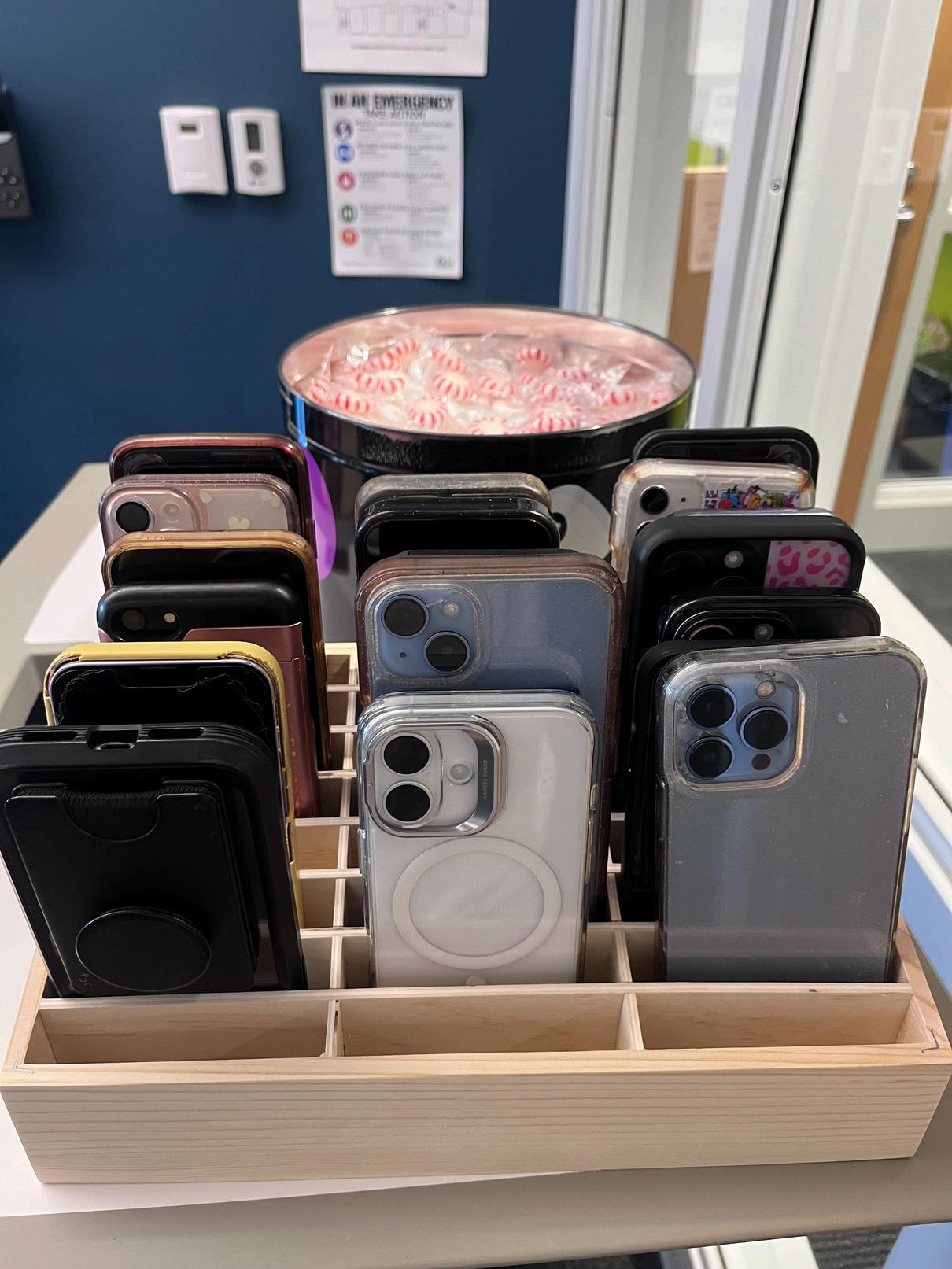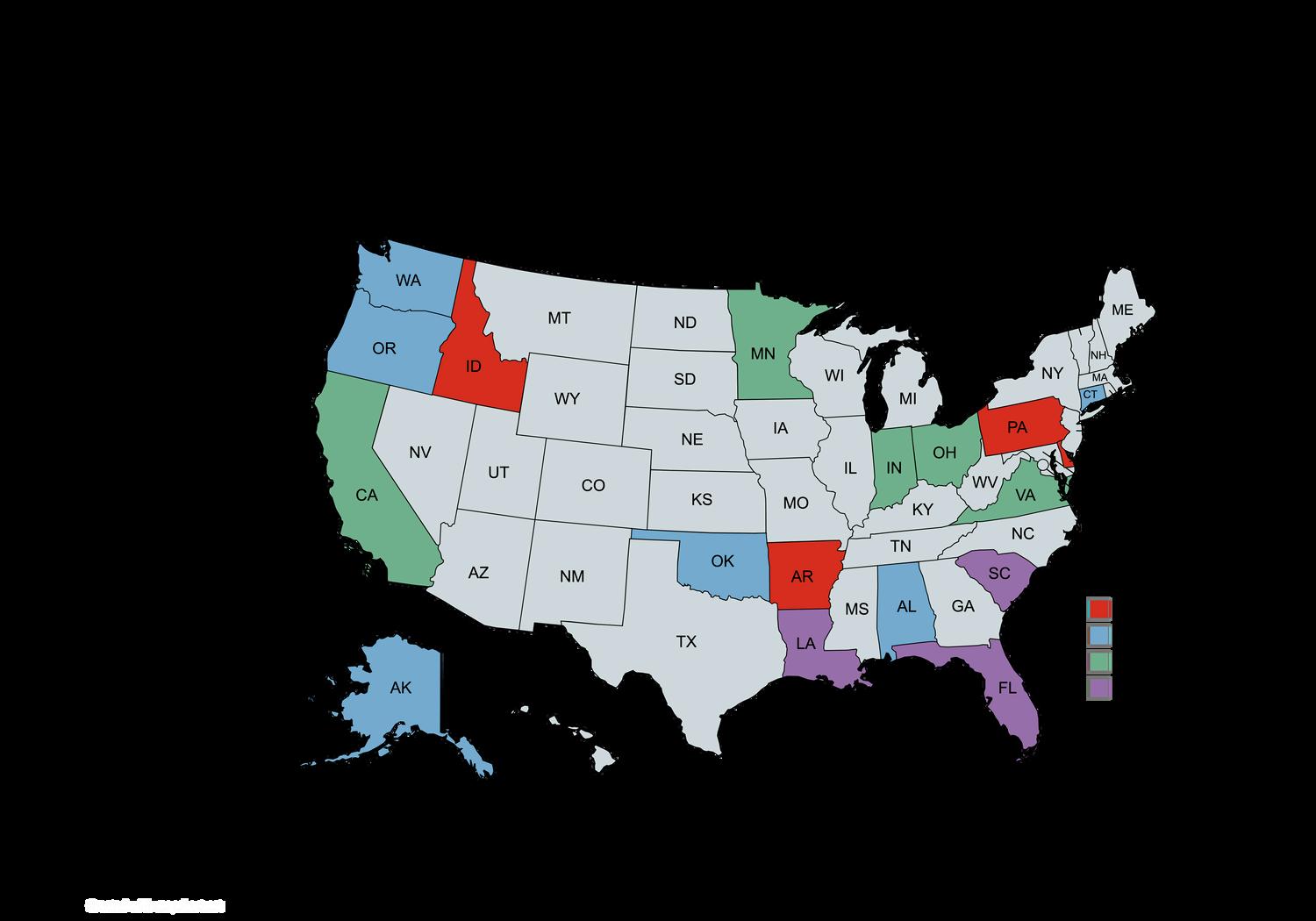
4 minute read
School Phone Bans Spread Across the U.S.
Written by Sahana Shah.
This school year, many schools across the United States have implemented strict bans on cell phone usage during the school day, citing concerns about student attention, engagement, and social interaction.
Research, including studies by social psychologist and author of “The Anxious Generation” Jonathan Haidt, has highlighted connections between increased smartphone use and declining academic performance. Teachers are reporting growing challenges in keeping students focused, as many are frequently distracted by their phones, particularly social media.
While some students use their phones between classes, during breaks, or at lunch, critics of widespread phone use say this behavior limits face-to-face interaction with peers and teachers. At least 15 states have enacted laws or implemented policies restricting phone use in schools, according to an Education Week analysis. These states, including Alabama, Arkansas, California, Connecticut, Delaware, Florida, and South Carolina, have either imposed statewide restrictions or recommended that school districts adopt their own policies to manage phone use.

Concerns about the impact of cell phone use extend beyond academic performance. Research has linked adolescent use of social media to various mental health issues, including anxiety, depression, and body dissatisfaction, particularly among teenage girls. Exposure to harmful online content is cited as a contributing factor to these issues, which can also lead to problems such as eating disorders. In addition, excessive use of social media is often associated with sleep disruption, which negatively affects students' ability to focus and perform well in school.
Despite these concerns, social media use is not entirely negative. It offers students opportunities for self-expression and the ability to connect with others. Some educators have also pointed out that social media can be a useful tool for sharing school-related information, and banning phones outright may limit students' access to important resources.
The New York Times found that student reactions to the phone bans have varied. Some students report that the restrictions have helped them concentrate more in class and engage with their classmates. Others say the bans have led to a reduction in cyberbullying because students are less likely to take photos or videos of their peers during the school day. However, some students argue that a total ban on phones is not the ideal solution. These students suggest that phones could be allowed during certain times, such as breaks, to check messages from parents or friends, which could help alleviate the anxiety of being disconnected during the day.
A smaller group of students believes that unrestricted phone access should be permitted, arguing that phones are necessary for tasks like research, listening to music, or communicating with family members. Some say that having access to their phones could help them manage personal concerns, making it easier to focus on school. Others express worries that a phone ban could exacerbate negative attitudes toward school, which many students already view as a source of stress and anxiety.
The impact of phone bans on student behavior and performance appears to vary. Al Jazeera found that while some teachers have observed improvements in student engagement and classroom participation, others report little change. As phones continue to play a larger role in students' lives, schools are left to determine whether these bans are the most effective way to address the challenges posed by cell phone use.
The debate over phone bans in schools raises questions about the balance between ensuring students remain focused on their education while allowing them access to technology that has become an integral part of modern life. Whether these bans become a lasting solution remains to be seen, but for now, schools across the country are grappling with how to best manage the presence of cell phones in the classroom.










